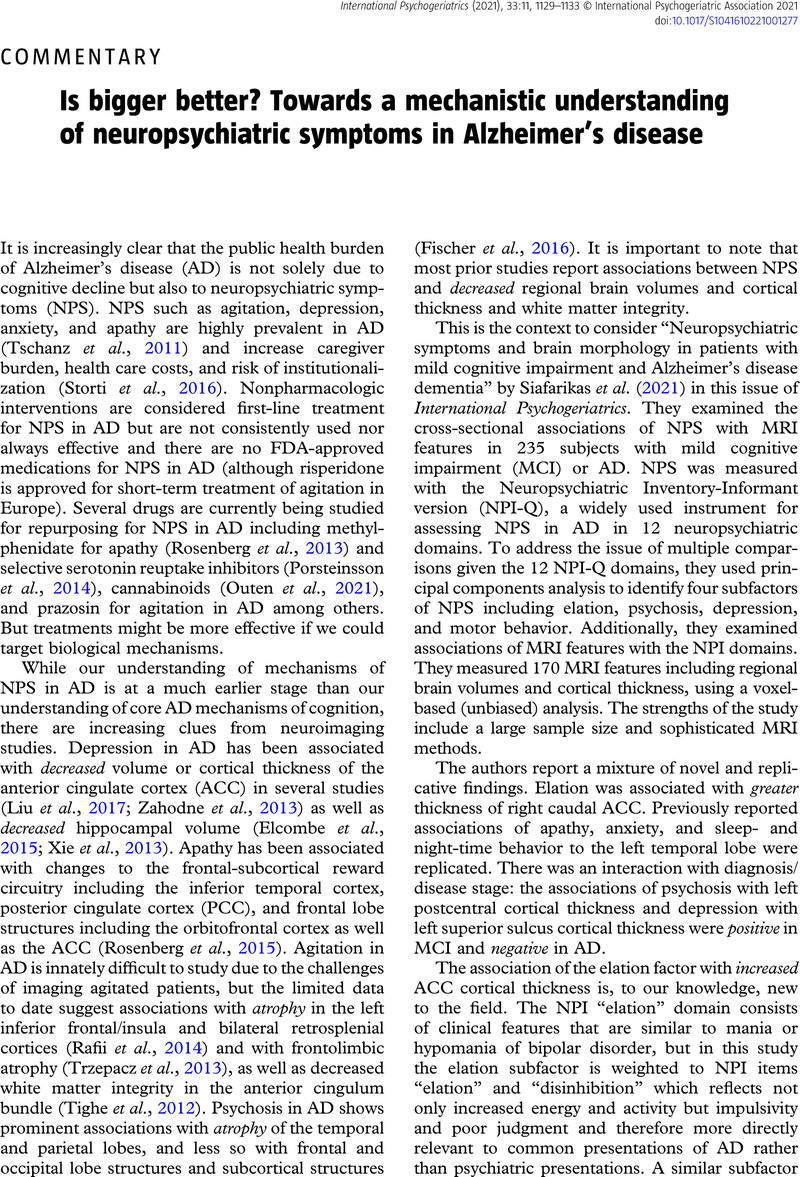Crossref Citations
This article has been cited by the following publications. This list is generated based on data provided by Crossref.
Siafarikas, Nikias
2024.
Neuropsychiatric and Cognitive Symptoms: Two Sides of the Same Coin?.
Journal of Alzheimer's Disease,
Vol. 98,
Issue. 1,
p.
75.
Ferreira, Diego Alves
Macedo, Lorena Barbosa Cunha
and
Foss, Maria Paula
2024.
Neuropsychiatric symptoms as a prodromal factor in Alzheimer’s type neurodegenerative disease: A scoping review.
The Clinical Neuropsychologist,
Vol. 38,
Issue. 5,
p.
1031.



